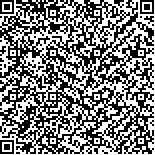| 引用本文: |
曾劲松,李弘,廖君,刘林,黄娟,喻坚柏,葛金文.脑泰方对脑出血急性期大鼠神经细胞过氧化损伤的干预作用及机制研究[J].湖南中医药大学学报,2020,40(7):817-822[点击复制] |
|
| |
|
|
| 本文已被:浏览 2099次 下载 549次 |
| 脑泰方对脑出血急性期大鼠神经细胞过氧化损伤的干预作用及机制研究 |
| 曾劲松,李弘,廖君,刘林,黄娟,喻坚柏,葛金文 |
| (湖南中医药大学第一附属医院, 湖南 长沙 410007;湖南中医药大学中西医结合学院, 湖南 长沙 410208;湖南中医药大学医学院, 湖南 长沙 410208) |
| 摘要: |
| 目的 研究脑泰方对脑出血急性期大鼠神经细胞过氧化损伤的干预作用及其机制。方法 采用自体血注射法构建SD大鼠脑出血模型,随机分为假手术组、模型组、N-乙酰半胱氨酸(NAC)对照组、脑泰方常规剂量(NTFC)组、脑泰方高剂量(NTFH)组,各组于造模并给药7 d后取材;采用HE染色观察脑组织病理形态,采用Zea Longa 5级评分法进行大鼠神经功能缺失评分,采用生物试剂盒检测病灶脑组织脂质活性氧(lipid-ROS)含量,采用免疫组化及Western blot技术检测谷胱甘肽过氧化物酶-4(GPX-4)及铁死亡标志物环氧合酶-2(COX-2)的表达。结果 与假手术组比较,模型组大鼠脑组织病理损伤明显加重,神经功能缺失评分明显升高,病灶脑组织GPX-4表达明显降低,lipid-ROS含量、COX-2表达明显升高,差异均有统计学意义(P<0.01);与模型组比较:NAC组及脑泰方各剂量组病理损伤明显减轻,神经功能缺失评分明显降低,脑组织GPX-4表达明显升高,lipid-ROS含量、COX-2表达明显降低(P<0.05,P<0.01);NTFH组GPX-4表达与NTFC组无显著差异,但NTFH组Lipid-ROS含量及COX-2表达水平均明显低于NTFC组,差异均有统计学意义(P<0.05)。结论 脑泰方可提高脑出血急性期大鼠GPX-4表达,减轻神经细胞的过氧化损伤,其干预机制和效果与铁死亡生化过程及其抑制剂一致,且脑泰方高剂量的干预效果优于常规剂量。 |
| 关键词: 脑出血 过氧化损伤 铁死亡 脑泰方 神经保护 |
| DOI:10.3969/j.issn.1674-070X.2020.07.008 |
| 投稿时间:2020-03-18 |
| 基金项目:国家重点研发计划·中医药现代化研究项目(2018YFC1704900);国家自然科学基金项目(81774174,81774033);湖南省中医药科研项目(201969)。 |
|
| Study on the Intervention Effect and Mechanism of Naotaifang on Neuronal Peroxidation Injury in Rats with Acute Intracerebral Hemorrhage |
| ZENG Jinsong,LI Hong,LIAO Jun,LIU Lin,HUANG Juan,YU Jianbai,GE Jinwen |
| (The First Affiliated Hospital of Hunan University of Chinese Medicine, Changsha, Hunan 410007, China;College of Integrated Traditional Chinese and Western Medicine, Hunan University of Chinese Medicine, Changsha, Hunan 410208, China;Medical College, Hunan University of Chinese Medicine, Changsha, Hunan 410208, China) |
| Abstract: |
| Objective To study the intervention effect and mechanism of Naotaifang on neuronal peroxidation injury in rats with acute intracerebral hemorrhage. Methods The model of cerebral hemorrhage in SD rats was established by autogenous blood injection, which was divided into a sham operation group, a model group, a N-acetylcysteine (NAC) control group, a Naotaifang conventional dose (NTFC) group and a Naotaifang high dose (NTFH) group. Materials were taken in 7 days after model establishment. HE staining was used to observe the pathological morphology of brain tissue, and Zea longa 5 grade scoring method was used to assess the neurological deficit of rats. Lipid-ROS was detected by biochemical kit. The expression of glutathione peroxidase-4 (GPX-4) and ferroptosis marker cyclooxygenase-2 (COX-2) were detected by immunohistochemistry and Western blot. Results Compared with the sham operation group, the pathological damage of brain tissue in the model group was significantly aggravated, and the neurological deficit score was significantly increased. The expression of GPX-4 was significantly decreased, and the lipid-ROS content and the expression of COX-2 were significantly increased. The difference was statistically significant (P<0.01). Compared with the model group, the pathological damage of NAC group and Naotaifang groups was significantly alleviated, and the neurological deficit score was significantly decreased. The GPX-4 expression in brain tissue was significantly increased, and the lipid-ROS content and COX-2 expression were significantly decreased (P<0.05, P<0.01). There was no significant difference in GPX-4 expression between the NTFC group and the NTFH group, but the lipid-ROS content and COX-2 expression levels were significantly lower than the NTFC group. The difference was statistically significant (P<0.05). Conclusion Naotaifang can improve the expression of GPX-4 in rats with acute ICH, so as to reduce the peroxidation injury of nerve cells. Its intervention mechanism and effect are consistent with the biochemical process of ferroptosis and its inhibitor, and the intervention effect of Naotaifang in high dose is better than that in conventional dose. |
| Key words: intracerebral hemorrhage peroxidation injury ferroptosis Naotaifang neuroprotection |
|

二维码(扫一下试试看!) |
|
|
|
|




